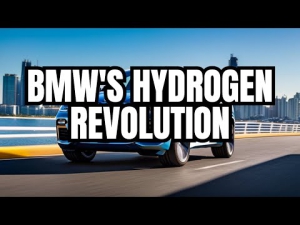The Truth About Hydrogen Fuel Cell Cars
Despite varying opinions, the future of driving is electric. Many experts believe that our global environment has reached a tipping point. Those experts believe that if we do not make significant progress in reducing our dependence on fossil fuels, there will be irreversible harm to the environment. That is why Toyota is committing its resources to develop battery EV and hydrogen fuel cell vehicles.
To help get some eyes on their efforts, Toyota partnered with popular science YouTuber “Physics Girl” (her real name is Dianna). Toyota provided Dianna with a brand new Mirai hydrogen fuel cell car. Dianna then went on a 1,800-mile road trip to learn as much as she could about hydrogen fuel cell technology. She realized that she had some misconceptions about hydrogen, which were quickly debunked.
How hydrogen fuel cells work
Like many emerging technologies, there are a lot of common misconceptions about hydrogen fuel cell technology. A major misconception is that hydrogen fuel cell cars are “burning” hydrogen. The truth is that hydrogen fuel cell cars are electric cars. Hydrogen is just the source of electricity.
When the driver presses the throttle pedal in a hydrogen car, hydrogen is sent from one of the tanks to a battery cell. Oxygen gathered from the car’s intake system is also sent to the cell. Inside the cell, the hydrogen comes in on the “anode” side of the cell, while the oxygen comes in on the “cathode” side of the cell.
Hydrogen is always bonded with something, so when it enters the cell, it hits a platinum catalyst that breaks the bonds and frees the protons and electrons. That process generates electricity which drives the electric motors. Meanwhile, the Hydrogen rebonds with the oxygen in the cell and becomes water.
How is hydrogen fuel stored in a fuel cell car?

While fuel-cell cars do not burn hydrogen, hydrogen itself is a high-energy, combustible gas. Engineers must take care of how hydrogen is stored in a vehicle subject to the elements and accidents such as car crashes. Specially designed tanks take on the task of safely storing hydrogen fuel.
To make sure the tanks are up to the task, Toyota puts them through rigorous testing, including crash tests, dropping them from a crane, putting them on top of an 800 degree Celcius fire, and even shooting at them with armor-piercing rounds sourced from the U.S. military.
What is it like driving a hydrogen fuel cell car?
According to Dianna, driving a hydrogen car is a lot like driving an electric vehicle. That is because a fuel cell car is an electric car. It just uses pressurized hydrogen tanks as its source of energy rather than a battery.
The main caveat to using a hydrogen car for daily use is that since hydrogen has not been widely adopted yet, it requires the user to plan around their refuels. Hydrogen is not very widely available, and even established hydrogen fuel stations can experience shortages or entirely run out of their supply by the end of the day. The California Fuel Cell Partnership website provides users with a map of all the hydrogen fuel stations in the state and keeps track of their hydrogen supply status.
What is the truth about hydrogen cars? It is early days, and currently, a few concessions have to be made. But as long as innovation continues, hydrogen cars could be just as common as battery EVs are today.
RELATED: 1 Way to Get Into a Toyota Mirai Is Through Lyft
The post The Truth About Hydrogen Fuel Cell Cars appeared first on MotorBiscuit.







